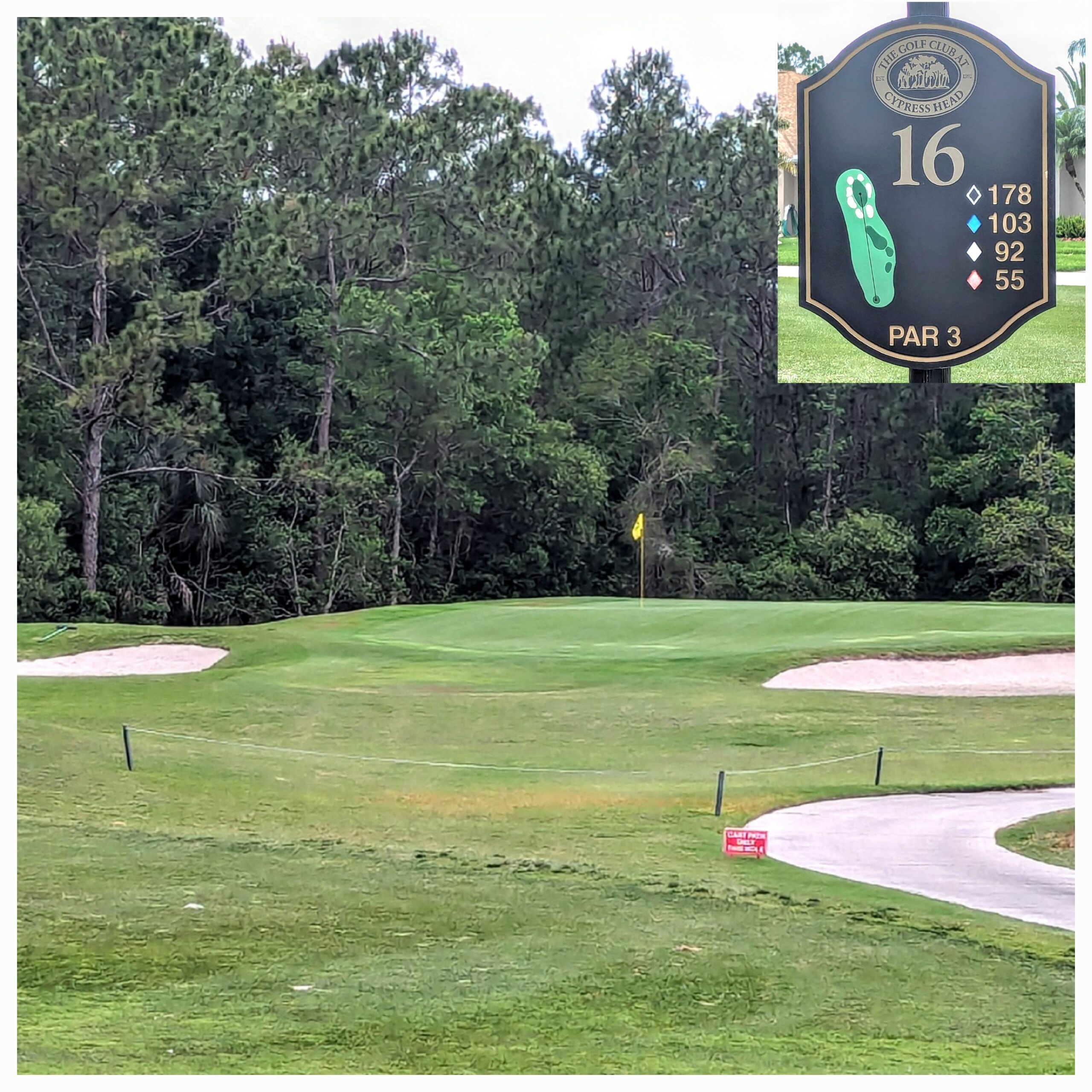
 DAYTONA BEACH, FL. – Because we do what we do, it’s golf that is our first target when we make our visits to the Daytona Beach area, and that’s a shame. Daytona offers so much more than golf.
DAYTONA BEACH, FL. – Because we do what we do, it’s golf that is our first target when we make our visits to the Daytona Beach area, and that’s a shame. Daytona offers so much more than golf.
There’s the beach, of course – 11 miles of oceanfront famous for its wide, firm sands that allow for vehicle usage. There’s even been automobile speed trials and stock car races there.
Then there’s the Daytona International Speedway, of course. It houses the Motorsports Hall of Fame of America but the stagings of the Daytona 500 since 1959 are the primary reason the facility has been dubbed the “World Center of Racing’’ and the “Birthplace of Speed.’’

Those attractions are tough to beat, but golf can’t be ignored – especially when LPGA Boulevard is one of the main drags as you exit I-95. The Ladies Professional Golf Assn. has called Daytona home since 1996 and that’s somewhat where our golf journey begins this time. The late Arthur Hills is one of the most popular course architects of this generation, and he designed one of the two 18-holers at LPGA International.
The LPGA’s Hills Course had been closed for five months, primarily for a comprehensive greens renovation project that restored the putting surfaces to their original size and U.S. Golf Association specifications. The result was that the greens netted an additional 26,600 square feet. Prior to the installation of the new TifEagle bermudagrass the Hills Course had 65,340 square feet of putting surface. Now it has 92,000 square feet.
TifEagle had previously been installed at the LPGA’s Jones Course and was found to be ideally suited to Daytona Beach’s climate. The Hills project, though, was more extensive. The bunker complexes were also restored with the addition of 300 tons of sand and the cart paths were resurfaced.
We’re also happy to report that we uncovered another Hills design that we weren’t aware was in the area on our previous trips. This one is at the Cypress Head course in Port Orange. Hills, who died in 2021, designed it in 1992 with assistance from Mike Dasher.
Hills’ courses are always fun, but are also known for the architect’s quirks. His designs usually have one hole that might be called goofy. Hills outdid himself at Cypress Head, widely acclaimed to be one of the best municipal courses in the South.
This one has back-to-back par-3s at Nos. 6 and 7 and back-to-back par-5s on the finishing holes, Nos. 17 and 18. Any back-to-back holes with the same par are unusual, and two such pairs is extremely rare.
But there’s more to the Hills’ touch than that at Cypress Head. The No. 16 hole is a par-3 that measures 178 yards from the back tees but only between 55 and 103 yards from the other markers. In other words, it seems like a nothing hole – too short to be much of a challenge for most players. The only thing is, it’s not!
Assistant professional Dylan Quintrell is filled with stories about how that hole confounds all types of players – from beginners all the way up to pros like himself.
The Cypress Head staff added to the unique nature of the course by conducting a survey of patrons last year to give names to each hole. The short 16th is “NightnDay.’’ Some of the others are “Double Trouble,’’ “Bigfoot’’ and “Alley Oops.’’
Chicago-based KemperSports has managed the city-owned facility for 22 years. Oregon’s Bandon Dunes and former U.S. Open site Chambers Bay, in Washington, are among the 140 courses managed by Kemper nation-wide.
The other course on this year’s Daytona schedule was an old favorite, New Smyrna. It’s a player-friendly layout featuring Donald Ross’ trademark turtle-back greens. This is one of Ross’ last creations. He died in 1948, but New Smyrna didn’t open until 1953. The facility also has had a well-regarded Tiano’s Restaurant for the past 16 years. Another Tiano’s location is included in the new OneDaytona complex.
For lodging there’s no shortage in Daytona. We tried an oceanfront facility for the first time, the Bahama House. It was great for ocean viewing and would work well for golf groups.

Dining is in abundance, too. Our biggest dinner was at Millie’s, a restaurant recently-featured on Guy Fieri’s “Diners, Drive-ins & Dives’’ TV show on the Food Network. We also hit Crabby’s Oceanside for a post-round meal, and it was a hopping place. Four Rivers Smokehouse is another hotspot, especially for barbecue buffs. And, if you haven’t already experienced one of those Buc-ee’s massive gas station-convenience stores, Daytona has one of those, too.
For those looking for more than golf courses and good restaurants Daytona has the Museum of Arts & Services, which tells you all you all want to know about Central Florida’s art, science and history.
The Jackie Robinson Ballpark is an historic treasure. Now the home of the minor league Daytona Tortugas, the park was where Robinson played his first spring training game in 1946. The park opened in 1914. It’s part of Daytona’s rich cultural heritage that also includes the African American Museum of the Arts.
Newest attraction is the Daytona Aquarium and Rainforest Adventure, located down the street from the Daytona International Speedway. The 55,000 square foot facility has 40 exhibits. They include a 100,000-gallon shark tank and a 12,000-gallon stingray touch pool.

